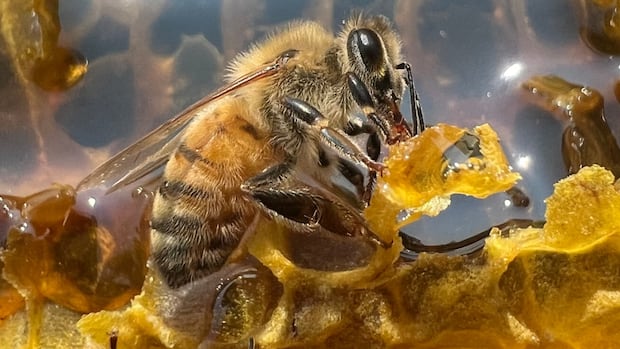4 civilians prepare for the riskiest SpaceX mission to date

Next Monday, if all goes to plan, a four-person crew will blast off from Cape Canaveral, Fla., aboard a SpaceX rocket, on their way to making history.
Funded by billionaire Jared Isaacman, the five-day mission has several scientific goals, but the biggest and undoubtedly riskiest one is the first commercial spacewalk.
“Whatever risk associated with it, it’s worth it,” said Isaacman during a press conference on Monday.
It’s the first in-flight test of SpaceX’s sleek new extravehicular (EVA) spacesuit, based off its intravehicular one.
But this spacewalk will be quite different from those with which we’re most familiar. The SpaceX Crew Dragon capsule doesn’t have an airlock, so the entire spacecraft will be depressurized, with all four crew members testing the new suits.
The crew consists of Isaacman, CEO of Shift4, a payment processing company based out of Pennsylvania; Scott “Kidd” Poteet, a former air force colonel; Sarah Gillis, a SpaceX engineer and astronaut trainer; and Anna Menon, another SpaceX engineer who also serves in mission control.
The launch is scheduled for no earlier than Aug. 26 at 3:30 a.m. ET.
It will be Isaacman and Gillis who will conduct the spacewalk 700 kilometres above Earth three days into the mission.
“EVA is a risky adventure. But again, we did all the work to really get ready for this,” said Bill Gerstenmaier, who was head of NASA’s human spaceflight until 2020. He is now an engineer at SpaceX.
The mission has been two-and-a-half years in the making.
“We kind of built off of what NASA’s heritage was, but I think we’ve also extended NASA’s heritage a little bit further,” he said.
SpaceX founder Elon Musk has the ultimate goal of colonizing Mars, so the spacesuits are a necessary step.
“It’s not lost on us that, you know, it might be 10 iterations from now and a bunch of evolutions of the suit but that someday someone could be wearing a version of which that might be walking on Mars,” Isaacman said. “And [it’s] a huge honour to have that opportunity, to test it out on this flight.”
Boldly going
Emmanuel Urquieta, vice-chair of aerospace medicine at the University of Central Florida, said there is a lot of history to support this historic spacewalk.
“I think the philosophy from these missions — Polaris Dawn and, in general, the Polaris program — is to follow the same fashion as the Gemini programs back in NASA,” he told CBC News. “We were developing a real space program looking at one capability after the other one, right, demonstrating first that you’re able to do it.”
The first spacewalk in history was on March 18, 1965, by Soviet cosmonaut Alexei Leonov. The U.S. followed on June 3, 1965, with astronaut Ed White.
WATCH | Edward White’s First Spacewalk:
Similar to the upcoming SpaceX spacewalk, there was no airlock, so the Gemini spacecraft had to be depressurized.
But it’s not all about the spacewalk.
There will be several other scientific objectives, including orbiting at a far higher altitude than the International Space Station (ISS).
The ISS orbits at roughly 400 kilometres, but Polaris Dawn will orbit at 1,400 kilometres during the mission. The goal is to better understand space radiation on the human body, as their orbit will take them partially out of the Van Allen Belt, a region that protects us from this harmful radiation.
They will also study other aspects of spaceflight on the human body, as well as a new form of laser communication using Starlink satellites.

The crew members say they are looking forward to their mission.
“I think it will without a doubt impact me. It already already has. These last two-and-a-half years have been absolutely impactful in the most incredible way,” said mission specialist Anna Menon at Monday’s press conference.
“I’ve spent years trying to put myself in the seat of astronauts in space, and I am really looking forward to learning firsthand what that experience is actually like.”

As for Isaacman, this will be his second flight. He was on the first all-civilian Inspiration4 mission in 2021 on board a SpaceX capsule.
“Being in space [there was] an unexpected moment where the moon rose while I was looking at Earth. I didn’t expect to see it and it was just, ‘Man, we gotta just keep this thing going,'” Isaacman said about space exploration.
“You know, I wasn’t alive when humans walked on the moon. I’d certainly like my kids to see humans walking on the moon and Mars and venturing out and exploring our solar system.”




